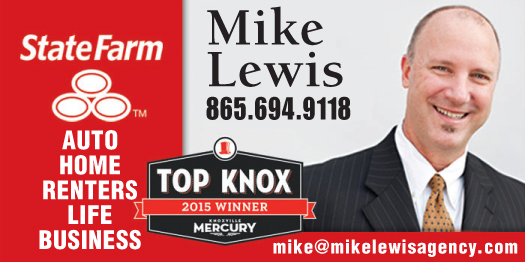Smoak: estimated $12.5 mil in 2017-18 Town revenues
Town of Farragut is in good shape financially, Town administrator David Smoak told Farragut Board of Mayor and Aldermen last week.
Smoak presented proposals to the 2018-19 budget during a workshop held before the Board’s meeting Thursday, March 8, that started its annual budget process.
“Overall, we are looking at around a $7.2 million budget this year,” he said. “We’re looking at expenditures slightly lower than that, [$7,126,948], leaving a fund balance of $10,971,281. For 2018-19, the staff proposes $6,650,183, leaving a fund balance of $9,095,363.
“Over the last three years, we’ve been able to have revenues over expenditures over $5 million per year,” Smoak added. “This certainly has been a very good economic time for the Town, and for us to be able to get a lot of big projects done that we have been trying to save up for over time.”
Every year, the Board works on its strategic plan for the next year. This past year, he said, the Board developed a new, updated plan — the first in six years.
Smoak anticipates the 2017-18 budget to end with an estimated $12,501,311 in revenues. Of that, $6.5 million would come from local sales tax, and $1.9 million would come from state sales tax.
For the FY 2018-19 budget, Smoak proposes the Town would have revenues of $10,919,320, of which $6,180,000 would come from local sales tax and $1.8 million would come from state sales tax.
The state and local sales tax makes up most of the Town’s revenues, he said.
“The first part of our revenue sharing, the largest part, is our local sales tax, [where] we are seeing a slight increase in our local sales tax,” Smoak added.
However, he said, last year and running into this year, “the state had made an error in the new software system it had. I guess it wasn’t capturing all the businesses that were in Farragut.
“Because of that error, some of the businesses were dropped off Farragut and placed, wrongly, into Knox County or Knoxville.
“It took some months to get that revenue back,” Smoak said. “The state allocated all that revenue back to Farragut in October. We have been averaging that out over the last six months, but what that’s going to do is give us an estimated number.”
Next year, he said the staff is expecting a 3 percent increase in the local sales tax.
“I don’t anticipate any large developments coming on line in the next year,” Smoak said. “There are several things in the pipeline, but even if they started construction the next couple of months, I don’t know if they actually would get done in time to have any real impact on us on next year’s budget.”
With the enactment of the Improve Act, the Town can expect a decrease in its General Fund revenue by approximately $23,730 — but an increase in State Street Aid Fund revenues by $117, 520.
“If you recall, there was a 4-cent gas tax increase this year. It’s going to be 1 cent next year and 1 cent the year after that,” Smoak said.
However, the Town continuously can expect to get less from the state Hall Tax.
“It will be eliminated by 2021,” Smoak said. “It’s been going down 1 percent a year, from the state, which is around a 17 percent reduction to us each and every year.”
In the Town’s 2016-17 budget, it received $1,143,490 from the tax. He estimates revenues from the tax at $1,091,836 for 2017-18 and he anticipates $400,000 for 2018-19.
Other revenues include the Wholesale Beer, Liquor and Mixed Drink Tax, which he proposes will be $1,165,000 for the 2017-18 budget; intergovernmental revenues, $651,400; building permits and licenses, $354,700; recreation fees, $162,500; traffic enforcement program fines, $50,200; rent, $91,720; and miscellaneous, $63,800.
Part of what will be decreasing general fund expenses is the tourism program.
“We are looking at tourism and we are looking at making it a separate fund, so the expenses we currently have in the General Fund, we are looking out to pull in that tourism fund,” he said. “We are still working on that.
The staff also has not included personnel merit or employee expenses in the budget.
“We usually do that later, once we have time to figure out where we’re at,” he said. “Overall, with personnel and operating costs, you can see a pretty steady trend line.”
This year, the Town had an increase on health insurance rates, which “caused us to have a higher end-of-the-year cost,” Smoak said. “Next year, we are not proposing to add any new positions, so we are looking at a flat number of employees for next year.”


